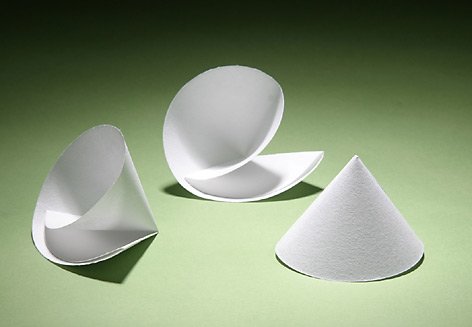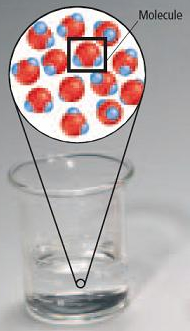CaCl2(aq) + Na2CO3(aq) -----> CaCO3(s) + NaCl(aq)
In this lab we observed the double replacement reaction between sodium carbonate and calcium chloride. We determined the excess and limiting reagents of the reaction, a theoretical and actual mass. After doing this we determined percent yield of the reaction.
Equipment:
-2 25 mL graduate cylinders
-1 250 mL beaker
-filter paper
-ringstand
After filling the cylinders with sodium carbonate and calcium chloride we added the calcium chloride to the sodium carbonate in a beaker. We then obtained a piece of filter paper, and weighed it. We wrote our names on the paper and then set up an apparatus for filtering using a ringstand. We poured the new solution carefully, bit by bit into the funnel. The filter paper filtered out the new precipitate, which was CaCO3. We then let the filter paper and precipitate dry and then weighed it again.
NEXT CLASS WE WILL LEARN PERCENT YIELD!!
Tuesday, March 15, 2011
Friday, March 11, 2011
Excess and Limiting Reactants
All the reactions we've done up until now assume that all reactants are completely used up during reaction. This is not the case. Often, reactants are in excess; there is some left over.
Here is an example:
What mass of CS2 is produced when 18.0 g of C are reacted with 41.0 g of SO2?
5 C + 2 SO2-------> CS2 + 4 CO
What mass of excess reactant is left over?
Here try and find mass of CS2 by using the masses of the reactants C and SO2.
Mass of CS2 (based on C) 18.0 g C x 1 mole/ 12.0 x 1 CS2/5 moles C x 76.2 / 1 mole= 22.9 g CS2
Mass of CS2 (based on SO2) 41.0 g SO2 x 1 mole/ 64.1 x 1 CS2/2 SO2 x 76.2/ 1mole = 24.4 g CS2
Since there is too much SO2 and not enough C, SO2 is the excess reactant because in the reaction all the C will be used up and the SO2 will be in excess.
In this reaction, C is the limiting reactant because it limits the amount of CS2 that can be formed, there is lots of SO2 and not enough C to make that much SO2.
Example #2. What mass of P4 is produced when 38.0 g of Ca3(PO4)2, 25.0 g of SiO2 and 9.70 g of C are reacted?
2 Ca3(PO4)2 + 6 SiO2 + 10 C -----> P4 + 6 CaSiO3 + 10 CO
Use the mass of each reactant and find the mass of P4.
Mass of P4( based on Ca3(PO4)2)38.0 g Ca3(PO4)2 x 1 mole/ 310.3 x 1 P4/2 Ca3(PO4)2 x 124.0/1 mole = 7.59 g P4
Mass of P4 ( based on SiO2) 25.0 g SiO2 x 1 mole/60.1 x 1 P4/ 6 SiO2 x 124.0/1mole = 8.60 g P4
Mass of P4 (based on C) 9.70 g C x 1mole/12.0 x 1 P4/ 10 C x 124/1mole= 10.0 g P4.
Ca3(PO4)2 produces the least amount of P4 = 7.59 g
The excess reactants are SiO2 and C.
How many grams of excess reactant are left over?
38.0 g Ca3(PO4)2 x 1mole/ 310.3 x 6 SiO2/2 Ca3(PO4)2 x 60.1/1 mole = 22.1 g SiO2.
To calculate excess, subtract this number from the original amount.
25.0 - 22.1 = 2.9 g SiO2 in excess.
38.0 g Ca3(PO4)2 x 1 mole/310.3 x 10 C/ 2 Ca3(PO4)2 x 12.0 / 1mole =7.35 g C
Subtract from original.

9.70 g- 7.35 = 2.35 g excess C
http://www.youtube.com/watch?v=JOQz2rIFpVM
Xtra help above :)
Monday, March 7, 2011
Stoichiometry with Molarity and STP
Today we learned how to solve stoichiometry problems involving molarity and STP.
Remember Molarity =M
M=moles/Litres or moles= M/L or moles/M = L
Example:
A tablet of Tums has a mass of 0.750 g. What volume of stomach acid(HCl) = 0.010 M is neutralized by a 0.750g portion of CaCO3?
1CaCO3(s) + 2 HCl(aq) ----> CaCl2(aq) + CO2(g) + H2O(l)
First find moles of HCl using stoichiometry.
0.750 g CaCO3 x 1 mole/100.1 g CaCO3 x 2 mol HCl/1 mol CaCO3 = 0.0150 mol
Now find the Litres using the molarity equation.
L= moles/Molarity
0.0150 mol/0.0010 mol/L = 15 L.
Now remember STP.
STP stands for Standard Temperature and Pressure
The conversion factor is 22.4 L / 1 mole or 1 mole/22.4 L.
You do the exact same thing with the other problems but when you have your desired substance in moles, you just multiply by 22.4 L / 1mole to find volume at standard temperature and pressure.
Example:
What volume of CO2(g) at STP is produced if 1.25 L of 0.0055 M HCl reacts with an excess of CaCO3?
First you find moles of the HCl.
moles = Molarity x litres
0.0055 M x 1.25 = 0.006875 mol HCl
Now just find the moles of CO2 using stoichiometry.
0.006875 x 1 mol CO2/ 2mol HCl
Now multiply by 22.4 L/ 1 mole.
Your answer will be 0.077 L CO2.
http://www.youtube.com/watch?v=z4nPxk1deuw
Here is some extra help!
Remember Molarity =M
M=moles/Litres or moles= M/L or moles/M = L
Example:
A tablet of Tums has a mass of 0.750 g. What volume of stomach acid(HCl) = 0.010 M is neutralized by a 0.750g portion of CaCO3?
1CaCO3(s) + 2 HCl(aq) ----> CaCl2(aq) + CO2(g) + H2O(l)
First find moles of HCl using stoichiometry.
0.750 g CaCO3 x 1 mole/100.1 g CaCO3 x 2 mol HCl/1 mol CaCO3 = 0.0150 mol
Now find the Litres using the molarity equation.
L= moles/Molarity
0.0150 mol/0.0010 mol/L = 15 L.
Now remember STP.
STP stands for Standard Temperature and Pressure
The conversion factor is 22.4 L / 1 mole or 1 mole/22.4 L.
You do the exact same thing with the other problems but when you have your desired substance in moles, you just multiply by 22.4 L / 1mole to find volume at standard temperature and pressure.
Example:
What volume of CO2(g) at STP is produced if 1.25 L of 0.0055 M HCl reacts with an excess of CaCO3?
First you find moles of the HCl.
moles = Molarity x litres
0.0055 M x 1.25 = 0.006875 mol HCl
Now just find the moles of CO2 using stoichiometry.
0.006875 x 1 mol CO2/ 2mol HCl
Now multiply by 22.4 L/ 1 mole.
Your answer will be 0.077 L CO2.
http://www.youtube.com/watch?v=z4nPxk1deuw
Here is some extra help!
Friday, March 4, 2011
Stoichiometry
Stoichiometry is the measurement and study of the relationships and quantities between products and reactants.
Let's examine a chemical equation:
__C4H10(g) + __ O2(g) ---------> __CO2(g) + __H2O(l)
First we must balance it!
2 C4H10 + 13 O2(g) -------> 8 CO2(g) + 10 H2O(l)
The numbers in front of the products and the reactants are called mole ratios.
We use this in stoichiometry to convert between grams and moles of the products and reactants.
Example:
If 24.0 grams of C4H10 was reacted with O2, how many grams of CO2 would be formed??
Make a mole map!!!!
You cannot convert directly from grams of C4H10 to grams of CO2 so first you must convert to moles.
Here is how you set up your equation:
24.0 g C4H10 x 1 mole/molar mass C4H10- This converts grams of C4H10 into moles.
Now you use stoichiometry to determine moles of the CO2
Remember: What you want/what you have
So: multiply moles of C4H10 by 8 mol CO2/ 2 mol C4H10
Now you have moles of CO2. All thats left is to convert moles of CO2 into grams of CO2
Multiply moles of CO2 by the molar mass of CO2/1 mole.
Your answer will be: 72.8 g CO2
Ex. 2
2 KClO3(s) -------> 2KCl(s) + 3O2(g)
How many molecules of KCl will be formed when 45.0 g KClO3 is decomposed?
45.0 g KClO3 x 1mole/122.6 x 2 KCl/2 KClO3 x 6.022 x 10^23/1 mole=2.21 x 10^23 molecules of KCl
http://www.youtube.com/watch?v=nf8J2g_A8uE
Here is some extra help!
Let's examine a chemical equation:
__C4H10(g) + __ O2(g) ---------> __CO2(g) + __H2O(l)
First we must balance it!
2 C4H10 + 13 O2(g) -------> 8 CO2(g) + 10 H2O(l)
The numbers in front of the products and the reactants are called mole ratios.
We use this in stoichiometry to convert between grams and moles of the products and reactants.
Example:
If 24.0 grams of C4H10 was reacted with O2, how many grams of CO2 would be formed??
Make a mole map!!!!
You cannot convert directly from grams of C4H10 to grams of CO2 so first you must convert to moles.
Here is how you set up your equation:
24.0 g C4H10 x 1 mole/molar mass C4H10- This converts grams of C4H10 into moles.
Now you use stoichiometry to determine moles of the CO2
Remember: What you want/what you have
So: multiply moles of C4H10 by 8 mol CO2/ 2 mol C4H10
Now you have moles of CO2. All thats left is to convert moles of CO2 into grams of CO2
Multiply moles of CO2 by the molar mass of CO2/1 mole.
Your answer will be: 72.8 g CO2
Ex. 2
2 KClO3(s) -------> 2KCl(s) + 3O2(g)
How many molecules of KCl will be formed when 45.0 g KClO3 is decomposed?
45.0 g KClO3 x 1mole/122.6 x 2 KCl/2 KClO3 x 6.022 x 10^23/1 mole=2.21 x 10^23 molecules of KCl
http://www.youtube.com/watch?v=nf8J2g_A8uE
Here is some extra help!
Wednesday, March 2, 2011
Simple Stoichiometry
Stoichiometry is the measurement of the different quantities and relations between products and reactants.
It is very simple. In a chemical equation, you can obtain moles of a reactant from moles of a product and vice versa.
The stoichiometry ratio is WHAT YOU NEED/WHAT YOU GET
THIS IS THE MOLE RATIO.
For example: __H2 + __O2 -----> __H2O
BALANCE: 2H2 + 1O2 ----> 2H2O
Use the numbers in front to use the mole ration for stoichiometry.
If you have moles of oxygen( lets say 4.1 moles of oxygen) you can convert to moles of H2O.
4.1 mol O2 x 2 mol H2O/4.1 mol O2 = 2 mol H2O
It is very straightforward but harder stuff is to come!!
It is very simple. In a chemical equation, you can obtain moles of a reactant from moles of a product and vice versa.
The stoichiometry ratio is WHAT YOU NEED/WHAT YOU GET
THIS IS THE MOLE RATIO.
For example: __H2 + __O2 -----> __H2O
BALANCE: 2H2 + 1O2 ----> 2H2O
Use the numbers in front to use the mole ration for stoichiometry.
If you have moles of oxygen( lets say 4.1 moles of oxygen) you can convert to moles of H2O.
4.1 mol O2 x 2 mol H2O/4.1 mol O2 = 2 mol H2O
It is very straightforward but harder stuff is to come!!
Subscribe to:
Posts (Atom)





